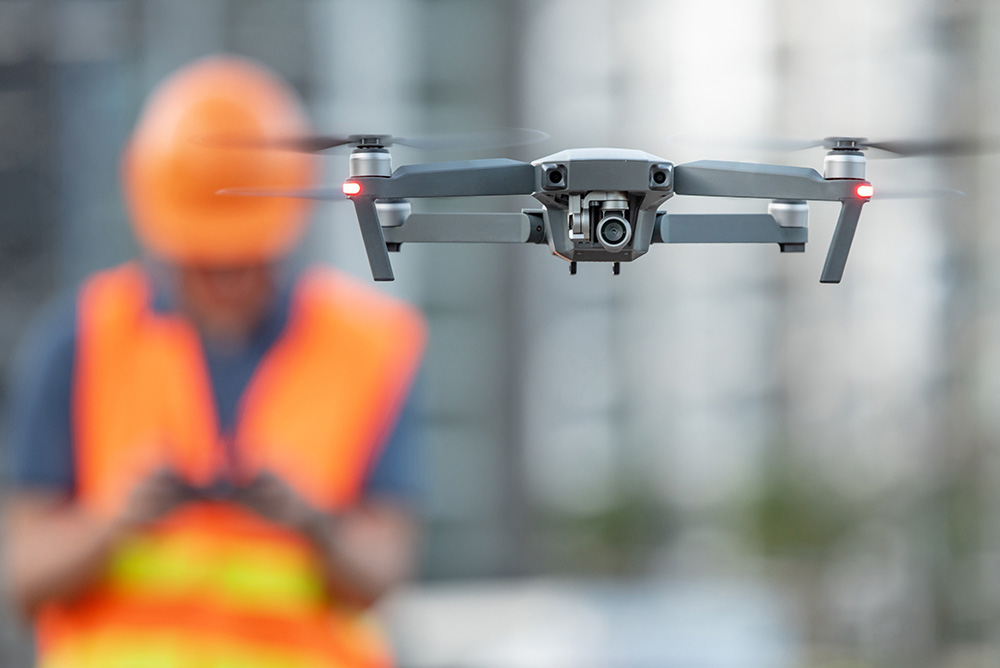
Tech trends will dominate safety profession in 2020 – and beyond
January 6, 2020
By
Christopher Hurley
Adopting more technology should be a resolution for all OHS professionals

The possibilities for drone usage in safety roles are limitless, writes Christopher Hurley. (zephyr_p/Adobe Stock)
When embarking on a new year and a new decade, it’s always prudent to take a look around and see what’s coming down the pipe.
If you’re like me, surprises are rarely good news. Being able to properly prepare yourself — and others — takes planning and foresight.
As a safety professional, being nimble and adaptable to changes in your environment is critically important.
No surprise, technological changes continue to be the biggest trend to watch in 2020 and beyond.
Think about it — 10 years ago, Twitter was still a relatively unknown service, the Apple App Store had just opened and automobile lane-assist and crash-warning systems would have sounded like something straight out of Star Trek.
Technological changes are generally significant, so you need to be ready.
Decade of drones
The idea of drones delivering packages in an almost-instant fashion is exciting for many. But for safety geeks, the possibilities for drone usage in safety roles are limitless.
From the delivery of emergency medical equipment to remote work camps, to preventative inspections of high-risk locations (think bridges and towers), drones can eliminate hazards to humans in a way we’ve never been able to before.
For those that have teams working outdoors — safety training, Transport Canada rules and application-specific procedures will require some homework prior to putting this great asset to work.
Let’s also remember that because these units maneuver with spinning blades, they require maintenance, handling and employee touches.
If you think the risks are insignificant, just remember Trevor Bauer, the Cleveland Indians pitcher who had a chunk of his finger taken off during some routine maintenance of his personal drone during his club’s 2016 playoff run.
Improved wearable PPE
It will be interesting to see how wearable PPE (personal protective equipment) plays out over the next decade.
As much as complying with heat and cold stress guidelines will generally set you up for an incident-free day, it’s not a perfect strategy as every individual responds to extremes differently. Individual metabolism, pre-existing medical conditions — even choice of breakfast — could have major impacts on someone working in extreme conditions.
But imagine managing a blast furnace in a steel mill and having access to information tied to wearable PPE that can provide real-time crew biometrics for assessing heat or cold stress.
Instead of looking at someone to assess if they have heatstroke, you’ll actually know that they are suffering symptoms that need attention.
Having an alarm condition set to sound once the whole crew is showing signs of heat- or cold-related stress is just incredible from a preventative measures perspective.
Wearable PPE will face some hurdles, however, as individuals may take exception to an employer having this level of medical information.
Is it a privacy breach to have this tool as a requirement of employment? No one is having a chip sewn into their neck — yet — but these measurements are still considered invasive to some.
Virtual-reality training
Computer-based training has been around since Windows 3.1. The blue screen of death never actually killed someone, but it has certainly caused its share of bad sweats and racing heartbeats.
Today, virtual reality is taking safety training to a whole new level — it’s not just for airplane pilots anymore.
Being able to immerse an employee in a pseudo-hazardous situation or an emergency response scene will allow a practice-makes-perfect approach to many scenarios that in the past were impossible to replicate.
And it can be done using your facility and your specific hazards, all without having to spend a Hollywood-sized budget.
Tech protects workers
Any worker that focuses on health and safety already has a challenging role.
By staying on top of the changing environment, the planning and pre-work will not only ensure your company is ready for the changes, but also that you are protecting your people as best as you can.
If you’re an old dog and still pushing back on tech advances, remember that Generation Z is now entering the workforce and has never known a life without constant technological connection.
Tech is here to stay. OHS professionals need to jump on board now or risk getting pushed off.
Christopher Hurley is the founder of Safety Services Canada, a multi-functional health and safety consulting firm located in Caledonia, Ont.